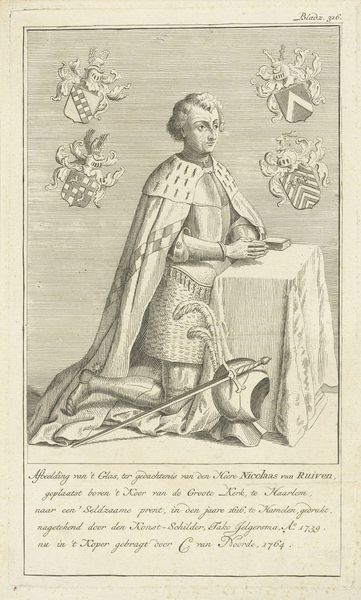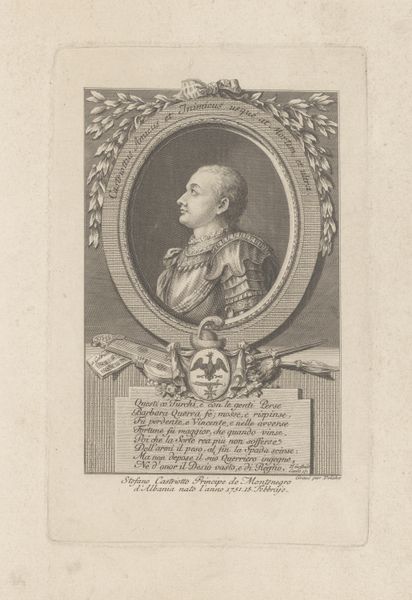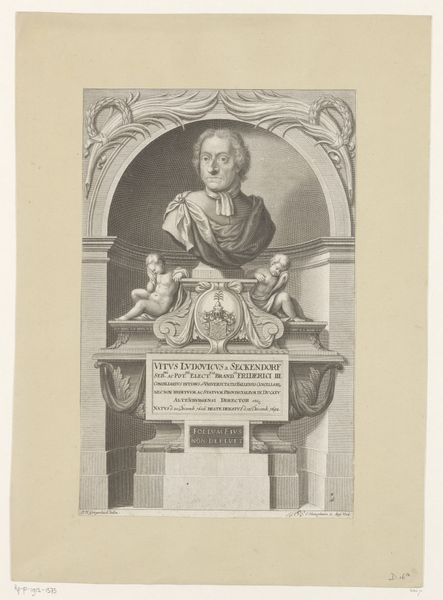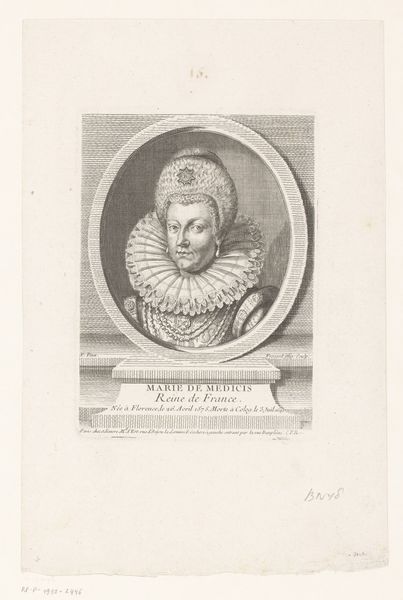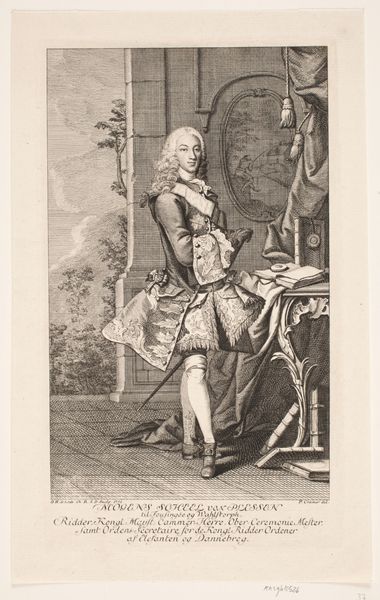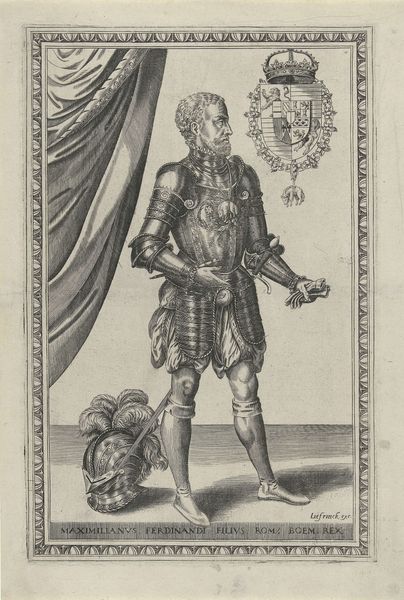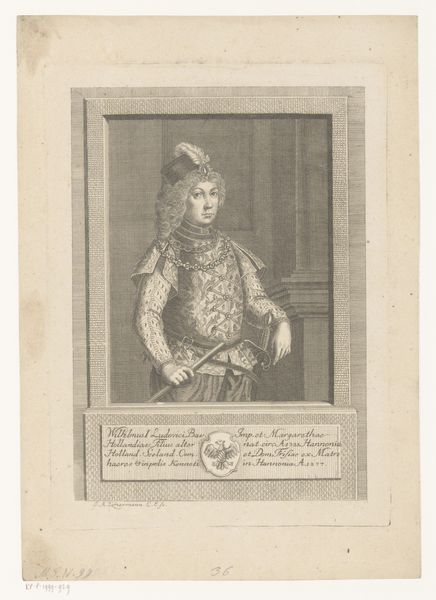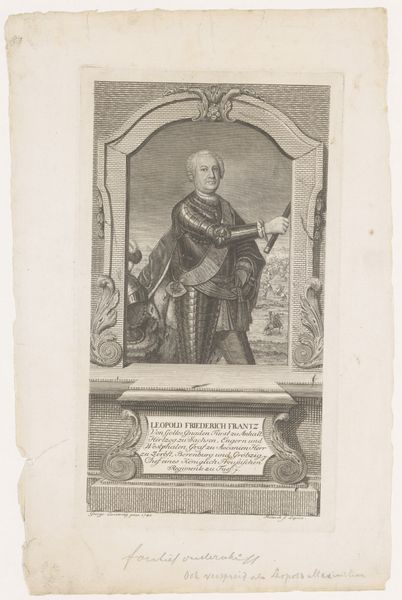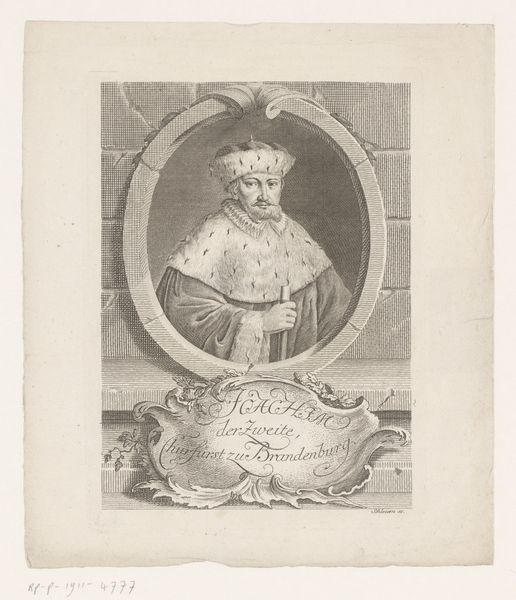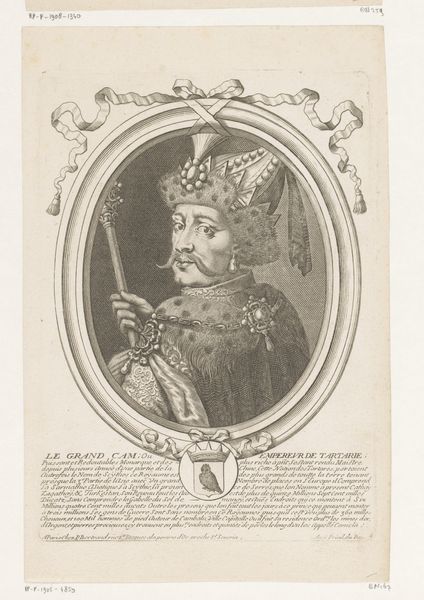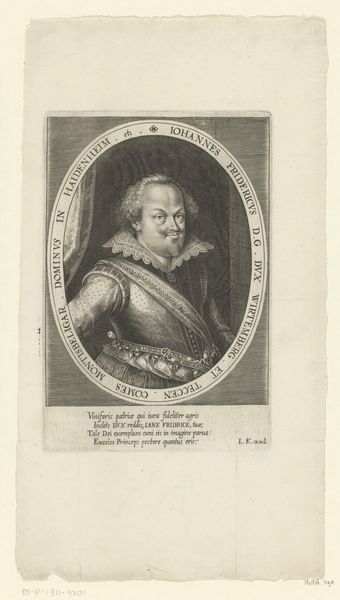
print, metal, engraving
#
baroque
# print
#
metal
#
old engraving style
#
history-painting
#
engraving
Dimensions: height 177 mm, width 125 mm
Copyright: Rijks Museum: Open Domain
Editor: Here we have Jacob van der Heyden's 1635 engraving, "Portret van Ferdinand III". The detail achieved with just metal is incredible! There's something severe and stately about this portrait, yet it also feels distant. How do you interpret this work, especially within its historical context? Curator: This engraving speaks volumes about power and representation in the Baroque era. Ferdinand III, Holy Roman Emperor, is depicted with deliberate grandeur, designed to legitimize his rule and project an image of unwavering authority during a period of immense religious and political turmoil, particularly the Thirty Years' War. Look at the inscription below; it lists his many titles, underscoring his vast influence. Editor: It's interesting you point that out because my first impression was actually quite sterile. Now I understand that was the point! But does this kind of controlled image contribute to or challenge our understanding of Ferdinand as a person? Curator: That's precisely the tension! Consider the role of portraiture at the time: It was less about individual personality and more about conveying status, dynastic strength and divinely ordained right to rule. This image, mass-produced through engraving, would have circulated widely, shaping perceptions of Ferdinand and reinforcing Habsburg power across a vast, fragmented empire. Consider the image not just as art, but as a carefully constructed propaganda. How do we, today, contend with that use of art? Editor: I never considered the print as propaganda. That's given me a whole new perspective to consider in relation to images from this time period. Thanks! Curator: Indeed, analyzing historical portraits demands a critical awareness of the power dynamics they embody and perpetuate. Reflecting on them highlights the continued significance of deconstructing such systems of power and influence.
Comments
No comments
Be the first to comment and join the conversation on the ultimate creative platform.


